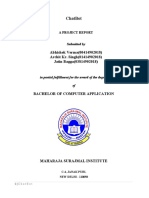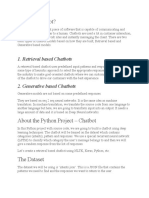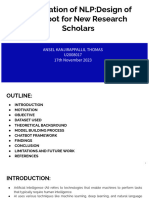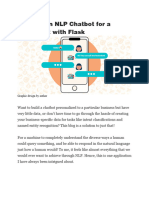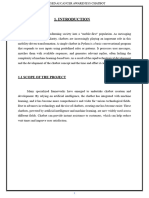0% found this document useful (0 votes)
8 views2 pagesChatbot Code Explanation
This document outlines the steps to create a chatbot using NLP and neural networks. It includes importing libraries, downloading resources, defining intents, preprocessing data, building and training a model, and implementing chatbot functions. The final section describes the chat loop for user interaction and response generation.
Uploaded by
sashidhr.k007Copyright
© © All Rights Reserved
We take content rights seriously. If you suspect this is your content, claim it here.
Available Formats
Download as PDF, TXT or read online on Scribd
0% found this document useful (0 votes)
8 views2 pagesChatbot Code Explanation
This document outlines the steps to create a chatbot using NLP and neural networks. It includes importing libraries, downloading resources, defining intents, preprocessing data, building and training a model, and implementing chatbot functions. The final section describes the chat loop for user interaction and response generation.
Uploaded by
sashidhr.k007Copyright
© © All Rights Reserved
We take content rights seriously. If you suspect this is your content, claim it here.
Available Formats
Download as PDF, TXT or read online on Scribd
/ 2




